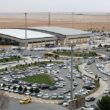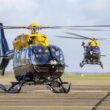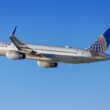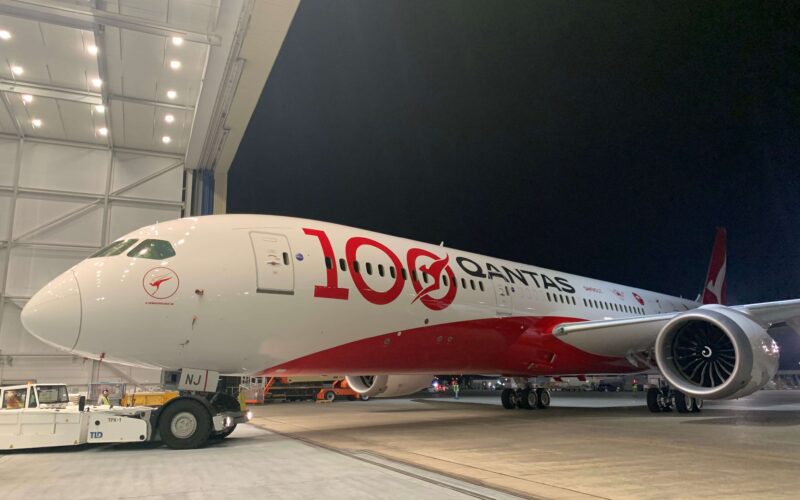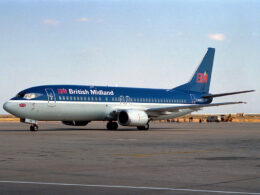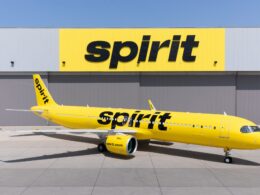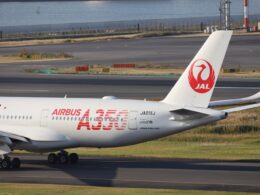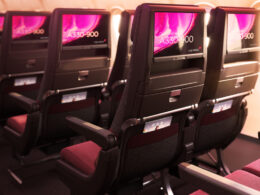Over the past few months, a lot of noise had been generated by airlines regarding their ultra-long-range flights. Behind the trials of these flights, stands one overlooked element – the magic of public relations (PR).
Project Sunrise, announced by Qantas on August 25, 2017, has been a true hit. Especially over the past few months, when the trials of flights between Sydney and two major capitals, namely New York and London, were conducted by the Australian flag carrier. Both flights, operated under Qantas’ code QF7879, hinting at the aircraft used, landed successfully in Sydney Kingsford Smith Airport (SYD) on October 20 from New York and on November 15, 2019, from London.
And this is where the project gets interesting – on both flights, media personalities were present: filming, posting on social media and again, generating buzz.
#ProjectSunrise
The same hashtag generated quite the results. With thousands of posts with the # on Instagram, Twitter and Facebook, the trial flights were the talk of the town as they landed in Sydney. Some YouTube videos about Sunrise climb into the 40-50 thousand views range, while one exploded to 1.7 million views. The crème de la crème of aviation’s personalities were sharing their opinions about the flights, including reviews about the 19-hour journey on board a Dreamliner.
Qantas’ Chief Executive Officer Alan Joyce called the direct flight from New York John F. Kennedy International Airport (JFK) to Sydney (SYD) a “historic moment for Qantas, Australian aviation and world aviation,” shortly after the Dreamliner landed in the Australian city after being in the air for 19 hours and 16 minutes.
Qantas service to New York from Sydney via Los Angeles International Airport (LAX) takes up roughly 20 hours of total flight time in the air. If a passenger were to fly from JFK to SYD via LAX, he would have a four-hour layover in LAX, before continuing on the journey on an Airbus A380 to the biggest city in Australia. The nation’s flag carrier uses “Fifth freedom” flight rights between JFK and LAX, as neither the origin nor the destination airport are located in Qantas’ home country. Thus, as a mere mortal, would a passenger choose to sit for 19 hours in Economy class, instead of having a four-hour layover in L.A., where he could stretch legs properly and grab a bite to eat without the food tasting the way it tastes mid-air?
Furthermore, Singapore Airlines (SIA1) (SINGY) had been operating flights between Singapore Changi Airport (SIN) and Newark Liberty International Airport (EWR) in New Jersey, just nine miles (14 kilometers) from the heart of The Big Apple since 2018. Flight SQ22 takes up around 18 hours, depending on wind, weather conditions and the origin airport, making it just an hour shorter than both Project Sunrise flights.
No trials preceded Singapore Airlines’ (SIA1) (SINGY) direct connection with the A350-900ULR. No trials preceded the Singaporean carrier’s previous record-breaking journey between the city-state and Newark when it first flew the same route using an Airbus A340-500 between 2004 and 2013. Then, the first EWR – SIN direct flight took “just under 18 and a half hours,” highlights Singapore Airlines’ (SIA1) (SINGY) FY 2003/2004 annual report.
So, does a flight that is an hour longer really warrant medical and passenger experience research considering what followed Qantas‘ Dreamliner arrival from London?
Celebrations and second thoughts
The second sunrise flight landed on November 15, 2019, arriving at 12:28 PM from London Heathrow International Airport (LHR). The press release announcing the arrival of the “research” flight also announced the Centenary program – a 12-month celebratory period to commemorate Qantas’ 100 year anniversary in November 2020. The same 787-9 that arrived from London was painted in a special livery, showcasing every logo the Australian company had used over the years. Royal Australian Mint revealed a special AUD1 coin to congratulate the airline with its century of operations. Out of the total 10 paragraphs in the press release, seven of them talked about Qantas’ anniversary, rather than the “research flight” itself, the aim of which is “improving crew and passenger wellbeing on ultra-long-haul services under consideration.”
Yet the flights might never materialize. Just four days after the LHR – SYD flight concluded, reports surfaced that the airline has rejected initial offers from Airbus and Boeing, citing price issues regarding aircraft that are actually capable of flying between Sydney and New York and London. Qantas flew both research flights with 40 people on board, including flight crews, to reduce weight.
The Sydney-based airline is looking at the Airbus A350-1000ULR and the Boeing 777X-8, as they “are capable of operating Project Sunrise flights with a viable commercial payload,” according to a press release by Qantas, dated August 22, 2019. The same press release stated that the decision on the ULR flights originating from Sydney “is expected by the end of December 2019,” pending “economics, regulatory approvals and industrial agreements.”
And the industrial agreements with pilot unions might become another hurdle that is too high for the Flying Roo to jump over. On September 6, 2019, Australian & International Pilots Association (AIPA), the main pilot union in Australia, publicly stated its concerns regarding Project Sunrise and its effect on the wellbeing of the crew.
“These research aircraft, however, cannot carry a commercial load over this distance. They are special services restricted to a much-reduced complement of passengers and crew. So more work may also be needed to assess the effects on cabin crew of working in fully laden aircraft over this distance,” argues AIPA’s president, Mark Sedgwick. He added that from “a pilot’s perspective, the key issue would be making sure that at the end of the flight, the crew was alert and capable of functioning with optimal performance.”
“I have no problem in saying ‘we gave it a good try but it didn’t work’,” said Joyce during Qantas Investor Day on November 19, 2019. Citing media coverage of the two flights, he noted that there is a “huge demand” for direct flights between SYD and JFK and LHR.
And it might be that Qantas is using Project Sunrise as a very ballsy negotiation tactic for aircraft manufacturers to lower their prices on ULR aircraft in exchange for the prestige of operating these flights, as evident by the amount of reporting on the two trial flights. Nevertheless, Qantas achieved its goal – people are still talking about the test flights, whose only tangible result so far is the start of the airline’s centenary celebrations.
More trials
While the Australian carrier is mulling the idea, another airline in the region launched direct flights to New York. On October 23, 2019, Air New Zealand announced a new route between Auckland (AKL) and Newark (EWR), which is set to commence in 2020. The flight between the two cities is also very similar in flight time compared to flights between Sydney and New York, but the former is a bit shorter.
Another airline has launched its own pair of trial flights to Australia. El Al, the flag carrier of Israel, said that they too would commence flights to Melbourne, Australia, on a trial basis. Three flights will depart to Melbourne Airport (MEL) from Tel Aviv Ben Gurion International Airport (TLV) as follows: April 2, April 23 and May 14, 2020, using one of its 787 Dreamliners to serve the route. The trial flights will be available to the public, as the Israeli airline is seemingly testing the waters about the demand for direct flights between the city pair. Currently, the shortest and the least time-consuming way of reaching Australia for El Al’s passengers is to grab a connection in Bangkok (BKK) or Hong Kong (HKG), two cities served directly by the airline.
However, trialing demand by launching flights is fairly bizarre. After all, the aviation industry is a game of educated guesses, whereupon a business decision is based on many factors. El Al has the luxury of estimating one of the factors, the demand. It already serves the route between Israel and Australia with a stopover with a partnering airline. But only now the airline has free aircraft to operate or trial the flight. El Al’s Vice President of Commercial and Industry Affairs Michael Strassburger has noted that as more 787s are joining the fleet, the company is “trialing additional unprecedented alternatives for expanding our route network and further connecting Israel with the Diaspora,” reports the Jerusalem Post.
The Jewish diaspora in Australia is fairly sizeable. In the 2016 census, the Australian Bureau of Statistics (ABS) noted that 91,000 identified their religion as Judaism, amounting to 0.4% of the population. However, the true number might be a lot bigger. The National Archives of Australia estimated that in the late 1990s, the Australian Jewish population was in excess of 100,000. Furthermore, over 49,000 Australian tourists have arrived in the country as of November 2019, creating a fairly sizeable potential market.
For example, Jetstar Airways recently launched a route connecting Gold Coast, Australia, with Seoul, South Korea. In total, 275,400 South Koreans had traveled to Australia Year-to-date (YTD) September 2019, while 79,000 Australians have visited South Korea YTD July 2019. The two countries are connected via several flights, including two daily Airbus A380 services to Sydney (SYD) from Seoul’s Incheon (ICN) airport. Thus, Jetstar definitely has a potentially growing market, plus, a low-cost carrier is bound to stimulate the growth of demand due to its low prices.
A direct connection between Tel Aviv and Melbourne would be the only direct flight serving the two countries, meaning unlike Jetstar, El Al would not have any competition at all. Even considering the fact that not every single member of the Jewish community will travel to Israel, a direct connection will definitely increase the demand for tourism, consequently providing more customers for the Israeli company.
Cited by Globe, a local Israeli news site, the Chief Executive Officer of the carrier, Gonen Usishkin, said that El Al “will only be able to see whether the trial will lead to us opening the route on the basis of performance,” as the flight is “expensive flight from an operational point of view.” Passenger demand and whether they agree to pay “the premium” will determine the final decision of El Al.
While publicly available data shows that there is a reason to launch these flights, the question, of course, remains whether the price of the flight will not hinder the demand.
Whether the Isreali airline is taking notes from Qantas’ playbook is a question that unfortunately will remain unanswered. Nevertheless, the impressive marketing campaign (and possibly, a negotiation tactic) by the Australian carrier might have set off a chain reaction of airlines attempting to increase their commercial presence by conducting “research” or “trial” flights themselves, including the recent El Al example.


